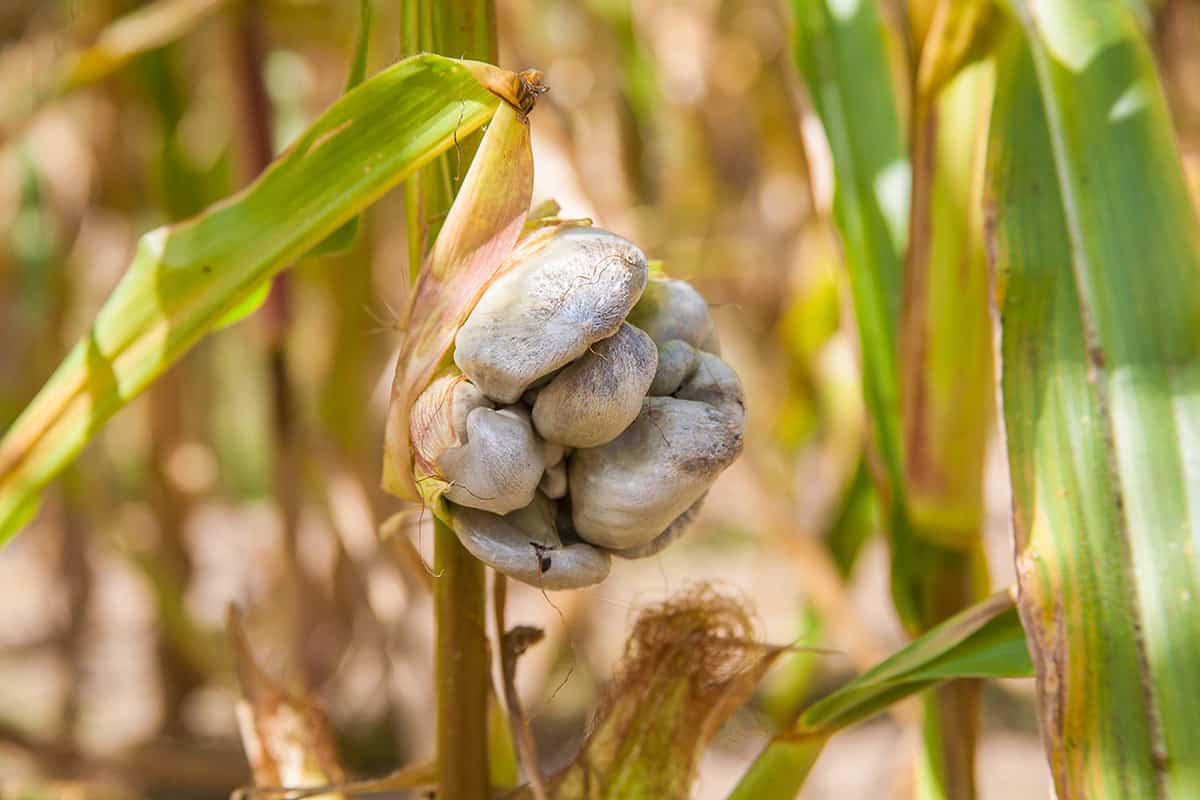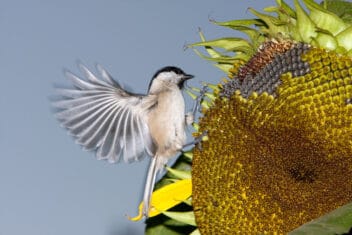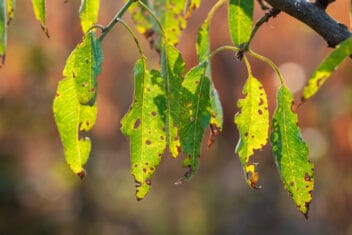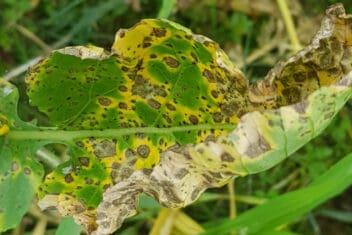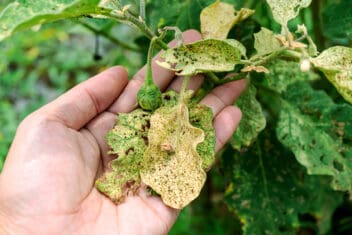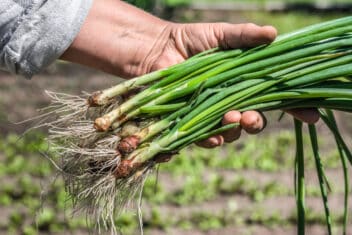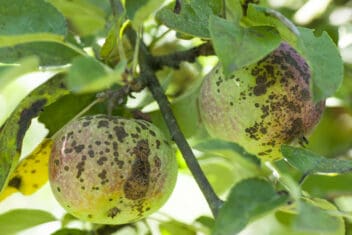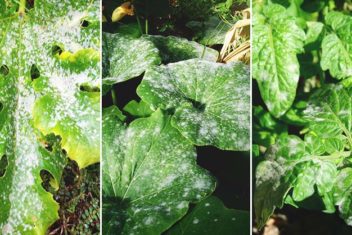Did you find some strange growth on the corn growing in your garden? Chances are you have corn smut, often called “devil’s corn” by farmers because of how devastating this fungus is.
The nickname is fitting. When corn smut strikes a corn plot, it destroys the harvest. The cobs are ugly and not edible; no one wants that on their dinner table. In addition, the corn won’t be suitable for freezing or canning.
It really is the devil.
Make sure you know everything about this fungal disease when growing corn and how to prevent it in your garden before it destroys your crop.
What is Corn Smut?
Corn smut is a fungal disease caused by the fungus called Ustilago maydis that appears on the stalks, leaves, tassels, or ears of the plant. It’s a highly contagious disease that destroys your harvest.
This fungus spreads quickly, forming on nearby plants and releasing spores that live for years in the soil.
Corn smut is found in Mexico and southern parts of the United States. It appears most commonly in the late summer, right before the corn is ready for picking. The kernels become disfigured and have galls and knobs all over them.
Trust me; it makes the corn totally inedible.
However, that’s not the whole story. Some enterprising (or extremely hungry) human discovered that the ears of infected corn are a delicacy with a delicious flavor. In some areas, they are treated similarly to mushrooms (it is a fungus, after all) and used in things like tacos.
Some chefs actively seek corn smut for recipes. Those who love Mexican cuisine will be happy to know that the fungal growth is a delicacy known as huitlacoche, Mexican truffle, or Mexican caviar. People in Central America have been using it for centuries in everything from soups and main dishes to desserts.

It tastes like a blend of corn and mushrooms.
But you grew corn because you want to eat corn, not mushrooms, right? Unfortunately, it’s a challenging, if not impossible, fungus to stop once it starts to grow.
The fungus likes the temperature rise in midsummer. So when the temperatures are between 80 and 90°F, the spores spring to life and thrive.
What Causes Corn Smut?
The fungus U. maydis (the cause of corn smut) is a long-living fungus that thrives in the soil.
The spores spread via the wind, splashing water and manure. If animals ate corn that was infected with corn smut, their feces would contain the spores. Never use this manure when amending your garden!
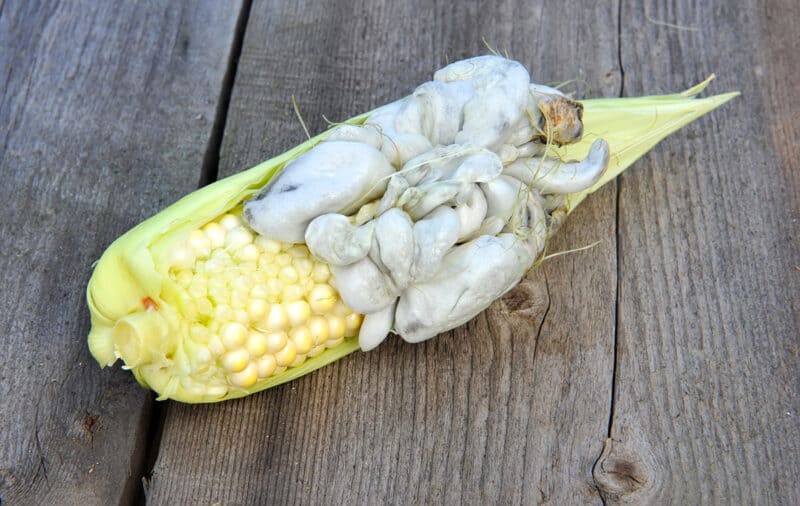
The fungus enters your corn through different entry points. Any injuries are a vulnerable spot, but the silks also are an entry point, so it’s hard to prevent.
Some conditions and situations make corn smut more likely in your garden.
- Too much or too little precipitation
- Soils low in fertilizer
- Soil high in nitrogen
- Poor pollination because of a lack of pollinating insects or dry conditions
Getting rid of corn smut is challenging and nearly impossible, so your goal needs to be to stop it from finding your corn patch in the first place. With the right practices, your healthy corn plants will stay that way. If worse comes, consider indulging in the Mexican truffle and selling it to local chefs in the area!
The Signs of Corn Smut in Your Garden
Spotting corn smut is fairly easy.
The most notable symptom is that the ears produce mushroom-like tumors or galls on the ears. At first, these galls look like small, whitish-grey irregularities on the ears. Over time, they expand and turn black, filling up with spores.
Ear galls are large – they generally measure four to five inches in diameter. Eventually, they rupture and release thousands of spores everywhere. The wind carries the spores and infects other corn plants in the area.
Sometimes, the galls form on the leaves instead of the ears, and they remain small. These galls get hard and dry rather than growing and exploding.
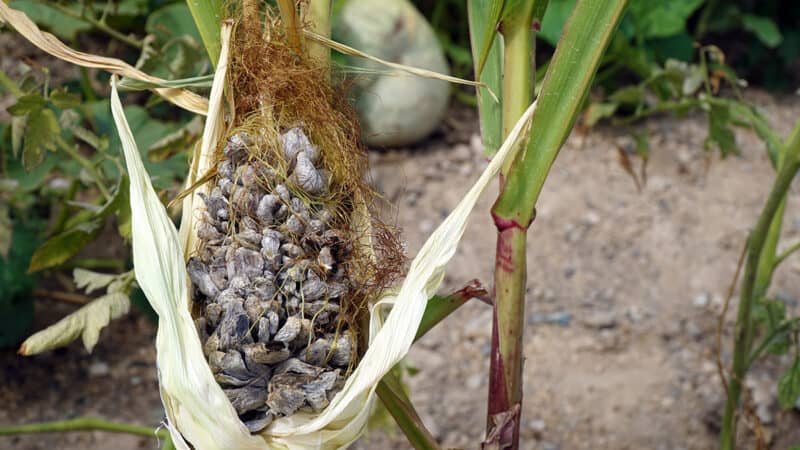
How to Get Rid of Corn Smut
The problem with corn smut is how easy it overwinters and lives in the soil. This fungus overwinters on garden debris and in the soil. The spores spread through the winter, rain, and irrigation, thriving in hot, dry weather.
Once in your garden, the spores live for five to seven years, and all it takes is an injury or an opening point on your plant for the fungus to enter.
Unfortunately, fungicides are not an effective option for this disease because it’s so widespread and lives in the soil for so long.
Remove Galls
The first step you need to take to get rid of corn smut is collecting and removing galls before they enlarge. You want to stop the spread in your garden, so removing the galls before they explode and release spores helps tremendously. In addition, it helps to break the disease cycle.
The galls develop a bit of black at the ends when they’re getting ready to release spores. Get rid of them before this point.
Remove and Destroy Garden Debris and Plants.
Unfortunately, saving your plants and getting rid of this fungus at the same time is not easy. The best route is typically to remove and destroy all infected plants and garden debris.
Yes, you need to remove the infected corn plants and burn or bag them. Never put these plants into the compost. Make sure you gather all plant debris on the soil, and I would consider removing the mulch underneath of the plants as well for an extra precaution.
Avoid Fungicides
You might read that applying fungicide is a good idea, but it’s not an effective way to get rid of corn smut. This disease is widespread, and while fungicides will slow or stop the disease at a very early stage, you have to treat it as soon as it appears to be effective.
If it’s effective, what’s the problem?
Most people don’t notice corn smut until the tumors and galls develop on the ears or leaves. By this time, fungicides are no longer effective, no matter how much you apply nor how often you apply.
Copper or sulfur fungicides applied weekly works for the early stages before the development of galls or tumors. That’s why some gardeners apply fungicides as a preventative measure in their gardens.
How to Prevent Corn Smut
Getting rid of corn smut is hard, so preventing this fungus from finding your garden is the best option. Here are some preventative measures to take.
Plant Resistant Varieties
Some corn varieties are more resistant than others. Smut infects all kinds of corn, including field and sweet corn. Here are a few of the most popular varieties that are resistant:
- Argent
- Brilliant
- Fantasia
- Pristine
- Seneca Sensation
- Silver Prince
Some say that SE (sugar enhanced) varieties are more likely to be resistant than others.
Reduce Infection Points
Understand that fungus and bacteria enter our plants through injuries, so you need to be careful around your plants during cultivation and maintenance. If you injure the roots, stalks, or leaves, it gives the spores a place to enter your plant.
Take great care around your plants.
Keep Pests Out of Your Garden
Keeping pests out of your garden helps to prevent damage. Unfortunately, some insects, like corn borers, cause serious damage and encourage the development of corn smut.
Corn borers are particularly devasting because it creates so many different entry points for the fungus to enter.
Practice Crop Rotation
Some people think that crop rotation isn’t for small gardens, but it is. It’s easy to do and helps to stop the spread of fungus and diseases. Corn smut only infects corn, so planting corn in the same area again is asking for trouble.
Rotate your crops each year!
Always Use a Balanced Organic Fertilizer
When your soil has too much nitrogen in it, corn smut is more likely. Therefore, it’s best to use a balanced, organic fertilizer that isn’t too heavily comprised of one component. Aged compost is ideal for growing corn.
If you end up using too much nitrogen in your garden, balance it out by adding more phosphorus to your soil. Phosphorus reduces the risk of smut in your garden.
